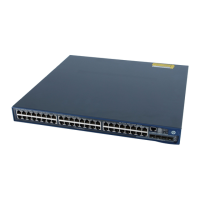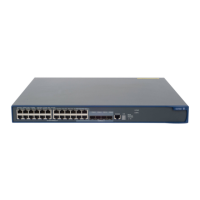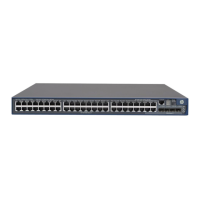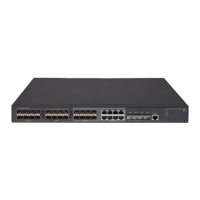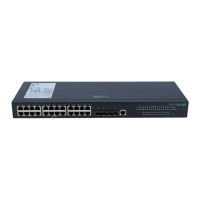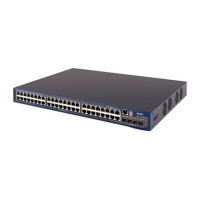18
Grounding the switch
WARNING!
Correctly connecting the switch grounding cable is crucial to lightning protection and EMI protection.
NOTE:
The power and grounding terminals shown in this section are for illustration only, and may be different
from the switch's actual power and grounding terminals.
The power input end of the switch has a noise filter, whose central ground is directly connected to the
chassis to form the chassis ground (commonly known as PGND). You must securely connect this chassis
ground to the earth so the faradism and leakage electricity can be safely released to the earth to
minimize EMI susceptibility of the switch.
You can ground the switch in one of the following ways, depending on the grounding conditions
available at the installation site:
Grounding to a grounding strip
Grounding to a buried grounding conductor
Grounding through the AC power cord
HP recommends grounding the switch to a grounding strip in the equipment room, using the grounding
cable provided with the switch, whenever possible.
Grounding to a grounding strip
If a grounding strip is available at the installation site, connect the grounding cable to the grounding
strip.
WARNING!
Connect the grounding cable to the equipment room's grounding system. Do not connect it to a fire
main or lightning rod.
NOTE:
An OT terminal is supplied with the A5120 EI series A5120-24G-PoE+ SI and A5120-24G-PPoE+ SI
switches. For other models, the OT terminal is user-supplied.
To connect the grounding cable to the switch (the A5120-48G EI (2 slots) is shown as an example):
1. Identify the grounding point (with a grounding sign) on the rear panel of the switch chassis, and
remove the grounding screw from the grounding point.
2. Thread the grounding screw through the grounding cable's OT terminal, as shown in Figure 19.
3. Use a screwdriver to fasten the grounding screw into the grounding screw hole.
